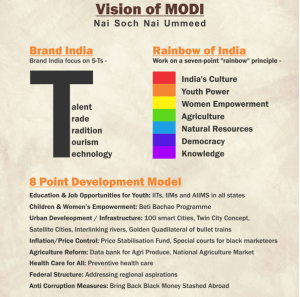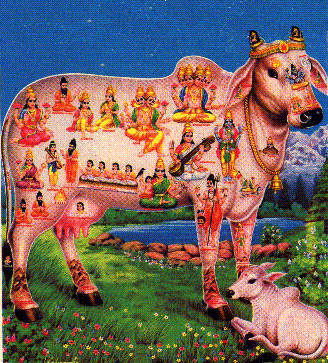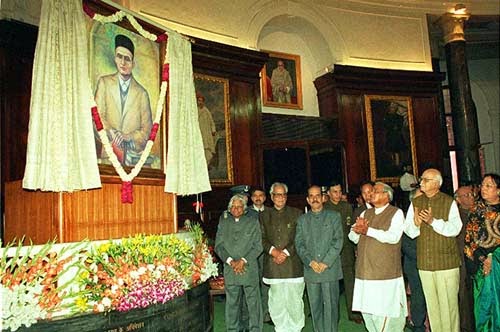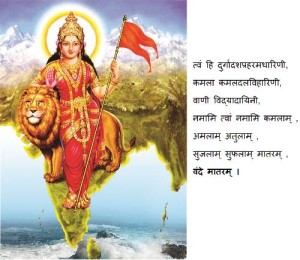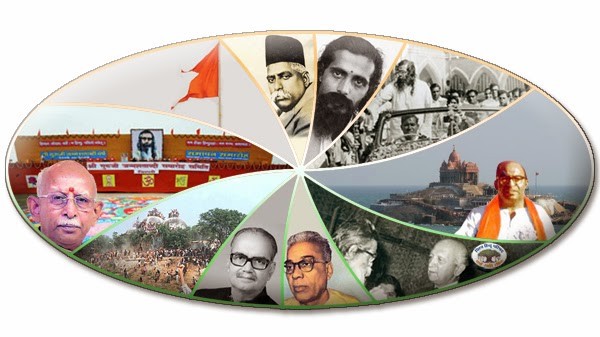History was always a favorite topic till we reached adult-hood and realized that everyone was spinning a story from a particular angle (mostly Marxist). Every detail was emphasized (or de-emphasised) as per the ideological requirement.
Eventually one gets habituated to the little tricks and place filters to sift out the propaganda. That said even propaganda is enjoyable if done well and good historians are inevitably superb story tellers. One may declare that the text is all false yet the yarn is beautiful. Yes, sometimes the story is just that good that you just sit back, relax, and enjoy the story.
……………
A hot and fetid June night on the small Mediterranean island of
Malta, and a Christian sentry patrolling at the foot of a fort on the
Grand Harbour had spotted something drifting in the water.
The
alarm was raised. More of these strange objects drifted into view, and
men waded into the shallows to drag them to the shore. What they found
horrified even these battle-weary veterans: wooden crosses pushed out by
the enemy to float in the harbour, and crucified on each was the
headless body of a Christian knight.
This was psychological warfare at its most brutal, a message sent by
the Turkish Muslim commander whose invading army had just vanquished the
small outpost of Fort St Elmo – a thousand yards distant across the
water.
Now the target was the one remaining fort on the
harbour front where the beleaguered, outnumbered and overwhelmed
Christians were still holding out: the Fort St Angelo. The Turkish
commander wished its defenders to know that they would be next, that a
horrible death was the only outcome of continued resistance.
But
the commander had not counted on the mettle of his enemy – the Knights
of St John. Nor on the determination of their leader Grand Master Jean
Parisot de la Valette, who vowed that the fort would not be taken while
one last Christian lived in Malta.
On news of the
grotesque discovery of the headless knights – many of them his personal
friends – Grand Master Valette quickly ordered that captured Turks
imprisoned deep in the vaulted dungeons of the fort be taken from their
cells, and beheaded one by one.
Then he returned a
communiquè of his own: the heads of his Turkish captives were fired from
his most powerful cannon direct into the Muslim lines. There would be
no negotiation, no compromise, no surrender, no retreat.
We Christians, the Grand Master was saying, will fight to the death and take you with us.
The
Siege of Malta in 1565 was a clash of unimaginable brutality, one of
the bloodiest – yet most overlooked – battles ever fought. It was also
an event that determined the course of history, for at stake was the
very survival of Christianity.
If vitally strategic Malta fell, the Muslim Ottoman Empire would soon dominate the Mediterranean. Even Rome would be in peril.
The
Muslims had hundreds of ships and an army tens of thousands strong. The
Christians were a ragtag bunch of just a few hundred hardbitten knights
and some local peasant soldiers with a few thousand Spanish infantry.
Malta looked doomed.
That the Hospitaller Knights of St
John existed at all was a minor miracle. They were a medieval relic, an
order established originally to look after ailing pilgrims to the Holy
Lands during the Crusades 300 years earlier – other orders of the
Crusades, such as the Knights Templar, had been extinct for
two-and-a-half centuries.
They came from countries all
over Europe: Germany, Portugal, France, Spain. All that united them was a
burning desire to defend Christendom against what they perceived as the
ever-encroaching tide of Islam. Yet by the 16th century, an age of the
increasing power of nation states, these trans-national zealots were
viewed as an embarrassing anachronism by much of Europe.
Already
the Turks had forced them from their earlier home, the island of
Rhodes. Now the knights had moved to Malta – and were threatened once
more.
So savage was the fighting, so mismatched the two
sides and so important the moment, that I chose the Siege of Malta as
the subject of my latest novel, Blood Rock. It was the stage, as we
thriller writers say, for epic and mind-blowing history.
But
as I researched for my book, I came to realise that what happened on
Malta more than 400 years ago is salutary in today’s context. For as we
know only too well, religious extremism, terror tactics and barbarism
still exist.
Malta was no mere siege. It teaches us many
things: the need for courage and steadfastness by an entire populace in
the face of threat; the fragility of peace; and the destructiveness of
religious hate.
Suleiman the Magnificent, Sultan of Turkey
and pitiless ruler of the Ottoman Empire, stared out upon the
glittering waters of the Golden Horn estuary of Istanbul. He was the
most powerful figure on the planet – his titles included Vice-Regent of
God on Earth, Lord of the Lords of East and West – and Possessor of
Men’s Necks on account of his habit of beheading servants who displeased
him.
His realm and absolute remit stretched from
the gates of Vienna to the gardens of Babylon, from Budapest to Aden. He
was one of the richest men of all time who never wore the same clothes
twice, ate off solid gold plates encrusted with jewels, and took his
pleasure in a harem of more than 300 women.
An
octogenarian, he was utterly ruthless, employing an assassination squad
of deaf mutes to strangle traitors. (The reasoning was that they could
never be influenced by the pleas for mercy of their victims, nor tell
any tales.)
Suleiman had used them to dispatch both his
Grand Vizier (his prime minister) and his favourite sons. Less worthy
subjects could be executed by pouring molten lead down their throats.
Yet
by the standards of the day and his own dynastic line he was not
especially violent.
Other sultans had done worse: one, tiring of his
womenfolk, had drowned his entire harem – some several hundred strong –
in muslin sacks at the bottom of the Bosphorus; a second had written
into the royal prerogative that he could shoot ten or more citizens a
day with his bow and arrows from the roof of his palace.
Suleiman
controlled the greatest fighting force in the world. Before him lay an
armada of 200 ships ready to sail, an army of 40,000 troops on board. He
planned to wipe the barren rock of Malta and the Knights of St John
from the map.
These knights lived by raiding and
disrupting his Ottoman shipping routes. The last straw had been their
capture of the prized ship of his powerful courtier the Chief Black
Eunuch.
Because all his “parts” had been cut off by a
clean sweep of a razor – a metal tube had been inserted into his urethra
and the wound cauterised in boiling oil – the eunuch was also entrusted
to look after Suleiman’s harem.
The Sultan did not expect
undue trouble exacting his revenge. A mere 700 knights stood in his
way. Such a rabble would be quickly cleared.
The Turkish
fleet headed across the Mediterranean in March 1565. Aboard the ships
were the elite janissary shock-troops – the “Invincible Ones” – who had
carried Islam across Europe with the slashing blades of their scimitars.
Accompanying them were the blackplumed cavalry corps and the infantry as well as the drug-crazed Iayalars who
wore the skins of wild beasts and whose raison d’etre was to reach
paradise through death as they slit infidel Christian throats in battle.
In late May 1565, the invasion force arrived at the
island. The knights awaiting them enjoyed good intelligence of their
plans and had asked for assistance from the Christian armies of European
nations. Every kingdom spurned their request – other than Sicily, which
said that if the knights held out, help would eventually come.
You
have probably never heard of Fort St Elmo. It is a small star-shaped
structure sited at the tip of what is now the Maltese capital Valletta
on the north shore of Grand Harbour.
In late May 1565, it
was where the full might of the Turk artillery was unleashed, a hellish
crucible that would forge the future course of our modern age. For days
the invaders pounded the tottering and crumbling edifice, reducing its
limestone walls to rubble, creating a dust cloud. The knights refused to
yield.
At night, Valette sent reinforcements from St
Angelo by boat across Grand Harbour, in the knowledge they were heading
to their deaths.
After the artillery, the attacks went in,
wave upon wave of screaming and scimitar-wielding Turks, trampling over
the bodies of their own slain, laying down ships’ masts to bridge the
debris-filled moat into which the walls of St Elmo had slid.
Each
time they were met by the ragged and diminishing band of defenders,
fighting with pikes and battle-axes, firing muskets and dropping blocks
of stone, throwing fire-hoops that set ablaze the flowing robes of the
Muslims and sent them burning and plummeting to their deaths.
The
fire-hoops – covered in flax and cotton, dipped in brandy and coated
with pitch and saltpetre – were the knights’ own invention. Dropped
blazing over the bastion walls, they could engulf three Turks at a time.
For 30 days, cut off and doomed, the soldiers of St Elmo
prevailed. The Turkish general had expected the fort to fall within
three.
Late at night on Friday June 22, 1565, the few
hundred survivors from an original garrison of 1,500, sang hymns,
offered up prayers, defiantly tolled their chapel bell and prepared to
meet their end the next day.
Those unable to stand were
placed in chairs behind the shattered ramparts, crouching low with their
pikes and swords to await the final assault.
When it
came, and the entire Turkish army descended as a howling mass, the
handful of Christians still managed to fight for several hours.
Eventually the Ottomans took their prize. The crescent banners of the
Grand Turk flew above the ruins, the heads of the knights were raised on
spikes, and the crucified bodies of their officers were floated across
to Fort St Angelo on the far side of the harbour.
The Turks had lost time and up to 8,000 of their crack troops.
Summer
heat was rising, disease and dysentery spread throughout the Muslim
camp, and the dead lay piled around the blackened remnants of the seized
fort. deserted the knights – the princes of Europe had abandoned them.
But Grand Master Valette was not about to quit.
Scenes of
heroism and horror abounded in the terrible days that followed. There
were extraordinary characters: Fra Roberto, the priest who fought on the
battlements with a sword in one hand and a cross in the other; the two
English “gentlemen adventurers” who arrived belatedly from Rome to take
part in the action; Valette himself, who stood unyielding in the breach
and used a spear to battle hand-to-hand against the foe.
Others
had led desperate sallies against the Ottoman, harrying their labour
corps, sniping at commanders, spiking their guns. But the enemy, too,
had their brave and vivid figures. Among them was Dragut, the most
feared corsair of his day, whose skill and dash had served the Sultan
well. A cannonball splinter did for him.
Yet the siege
continued, the target now St Angelo, the final and fortified enclave of
the knights on the southern side of Grand Harbour.
The
Turks tried every twist and tactic in their military manual. They
tunnelled beneath the Christian defences to bury gunpowder and blow the
knights to bits. The Maltese responded with their own mines to blow up
the tunnels and there were terrible skirmishes below ground.
Next
the Turks drew up siege engines, giant towers designed to pour their
infantry direct on to the battlements. The knights removed stones at the
base of the battlement walls so that they could run out cannon through
the openings they had created, and blast the siege engines apart.
On
several occasions those walls were breached, the Turks rushing through
eager to slaughter all in their path. Triumph seemed at hand but they
found too late that the knights had improvised an ambush, creating a
killing zone into which they were funnelled and slaughtered.
Success
for the Turks was slipping away. The furnace temperatures of July and
August sapped morale and strength; the sense of failure clung as
pervasively as the surrounding stench of death.
The Turks’
commander, Mustapha Pasha, marched inland to take the walled city of
Mdina, only to withdraw when scouts informed him of its substantial and
well-armed garrison. It was a trick. Mdina was largely undefended, its
governor ordering women and children to don helmets, carry pikes and
patrol the walls.
Frantic, with casualties mounting and
autumn storms looming, the Turks rolled a giant bomb – a fiendish
barrel-shaped object packed with gunpowder and musketballs – into the
Christian positions.
The knights promptly rolled it back
and it blew a devastating hole in the massed and waiting Muslim ranks.
It rained. Believing the gunpowder of the knights to be damp, their
muskets and cannon useless, Mustapha Pasha again sent his troops
forward.
They were met by a hail of not only crossbow
bolts but gunfire, for Valette had anticipated such an moment, setting
aside stores of dry powder.
Finally, relief reached the
knights in the form of a small army from Sicily. Believing the enemy
reinforcements too weak to be of any consequence, Mustapha Pasha angrily
ordered his troops – who had bolted on hearing of the new arrivals – to
turn back and march towards them. It was the last of his many grave
blunders.
The cavalry of the relief force charged, then
the infantry, tearing into the Turkish centre, putting it to flight.
Rout turned to bloodbath. The once-proud Ottoman force scrambled in
disarray for its ships, pursued across the island, cut down and picked
off at every step. Thousands died and the waters of St Paul’s Bay ran
red.
Of the 40,000 troops that had set sail in the spring
from Constantinople, only some ten thousand made it home. Behind them
they had left a scene of utter devastation.
Almost the
entire garrison commanded by Jean Parisot de Valette – after whom the
city of Valletta is named – had perished. Now, after 112 days of siege,
the ragged handful of survivors limped through the blitzed wreckage of
their lines.
Malta was saved, for Europe and Christianity. The Knights of St John had won.
History
has moved on – the island withstood another siege which played a key
role in the saving of civilisation in the 1940s, this time against
Hitler’s forces. Today, the hotel and apartment developers have moved
in. Rarely is the 1565 Great Siege of Malta mentioned. Hardly ever do
visitors to the island dwell on such an ancient and forgotten incident.
But
I have stood in that tiny chapel recessed in the walls of Fort St Elmo,
the very place where defenders took their last holy sacrament on a June
night long ago. We owe those knights.
Their sacrifice was
immense, their effect on our lives more profound than we may know.
Yet
religious fanaticism continues, and global powers will still fight over a
piece of barren rock. Perhaps we never really learn.
Blood Rock by James Jackson is published by John Murray at £11.99.
……..
Link: http://www.dailymail.co.uk/news/article-466818/Historys-bloodiest-siege-used-human-heads-cannonballs.html
……
regards


